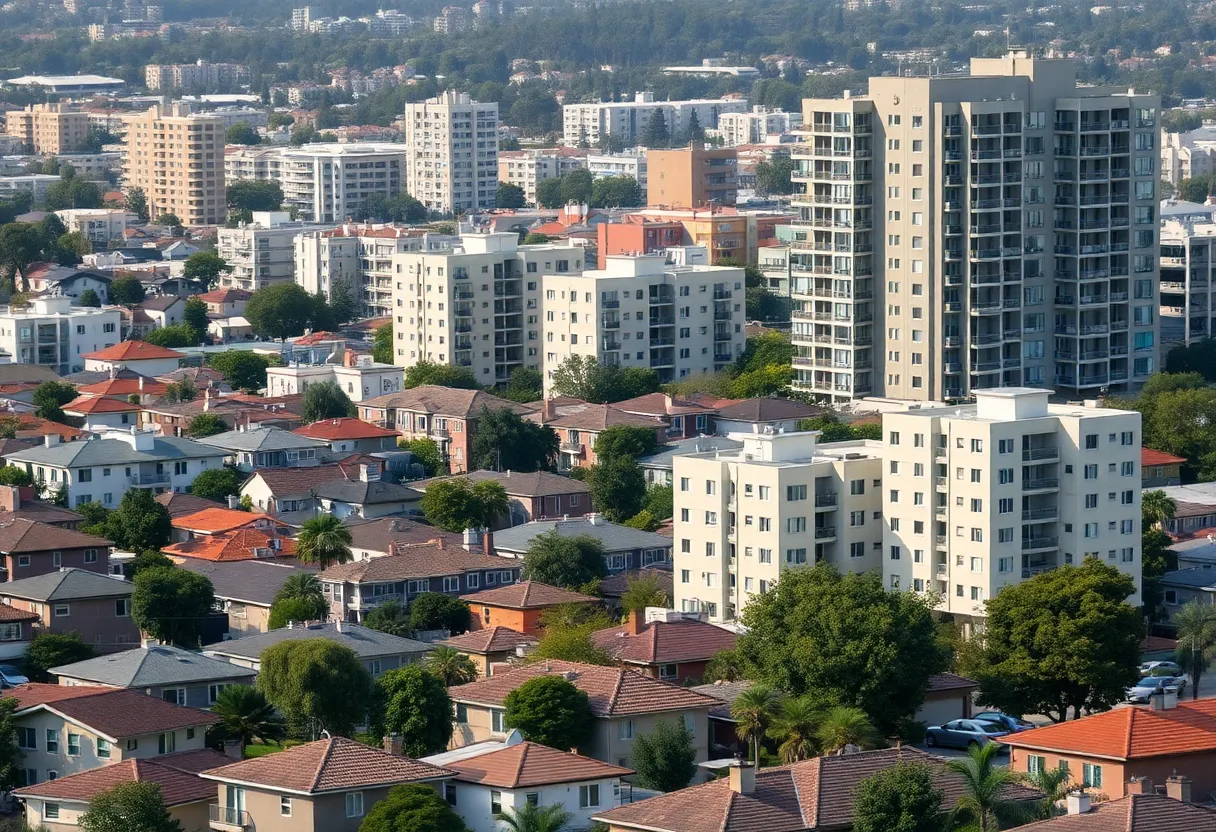News Summary
California is facing rising living costs, leading to an increase in eligibility for low-income housing programs. Recent data indicates many households, even those with six-figure incomes, now qualify for assistance. Counties like Santa Clara and San Francisco have raised their low-income thresholds significantly. However, the struggle for affordable housing remains, with many eligible individuals unable to find available assistance due to funding shortages and extensive waitlists. The state’s urgent need for affordable housing solutions is exacerbated by proposed federal budget cuts that could diminish rental assistance funding.
Surging Low-Income Housing Eligibility in California Amidst Rising Living Costs
California is experiencing a notable increase in the eligibility for low-income housing programs as living costs continue to soar. Recent data from the California Department of Housing and Community Development reveals that more individuals and families are qualifying for affordable housing assistance amidst high rental prices and daily expenses.
In some counties, even six-figure salaries now meet low-income housing criteria. For instance, Santa Clara County has raised its low-income eligibility for individuals by 8.8%, now standing at $111,700. Similarly, both San Francisco and San Mateo Counties maintain their low-income thresholds at $109,700.
Other areas also reflect significant increases in eligibility. In Sacramento, Placer, and El Dorado Counties, a yearly salary of $72,050 qualifies one-person households as low income, marking an 8.7% increase from the previous year. Alongside this, Los Angeles County and San Diego County have seen their low-income eligibility rise to $84,850 and $92,700, respectively, both reflecting an 8.8% increase. Meanwhile, counties like San Joaquin and Stanislaus are set at lower thresholds of $58,600 and $55,200.
These changes in income eligibility have significant implications for many Californians. Housing professionals note that the rising eligibility levels serve to inform potential clients about their opportunities to apply for income-based loan programs. However, the high living costs in the state pose a persistent challenge, making it difficult for individuals and families to afford housing despite their seemingly adequate salaries.
The affordable housing struggle is not unique to any one area; many new residents, including those moving from out of state, express concerns over affordability. For instance, the difficulty in finding affordable housing options is common, driven by rising rental costs that outpace increases in income eligibility.
Challenges in Affordable Housing Availability
Although eligibility for low-income housing programs has broadened, a significant portion of those simply qualify rather than find available assistance. Many programs have extensive waitlists or insufficient funding to cater to all eligible applicants. The ongoing challenges are exacerbated by federal budget proposals that aim to substantially cut funding for rental assistance services.
Proposed cuts by the Trump administration could result in severe reductions to federal rental assistance, targeting essential programs like public housing and Section 8. Critics warn that such budgetary constraints would worsen the housing affordability crisis and elevate homelessness rates in the state. Approximately 5 million American households currently rely on federal rental assistance, with roughly 560,000 of those residing in California.
The administration’s proposal also suggests transitioning rental assistance funding to a block grant model, permitting states to manage these funds independently. Concerns have been raised about the potential impact of such shifts disproportionately affecting working-class families and individuals.
Ongoing Needs for Affordable Housing Development
California faces an urgent need for affordable housing solutions, especially with recent natural disasters, such as wildfires, intensifying the housing crisis. Proposals for new affordable housing developments, like one in Woodside, have faced opposition due to environmental concerns, blocking progress in crucial locations. A report indicates that nearly 45,000 proposed affordable units are currently on hold due to funding shortages, requiring an estimated $1.79 billion in subsidies and $574 million in tax credits to advance.
Despite immediate needs, the current California budget proposal fails to allocate funding for essential homelessness initiatives and affordable housing programs. Without action, thousands of households may continue to struggle with obtaining stable and affordable living situations in the state.
Deeper Dive: News & Info About This Topic
- CBS News: California Affordability Crisis
- Los Angeles Times: Federal Rental Assistance Cuts
- San Francisco Chronicle: Woodside Housing Development
- Housing Finance: California Affordable Housing Pipeline
- Wikipedia: Affordable Housing

Author: Anaheim Staff Writer
The Anaheim Staff Writer represents the experienced team at HEREAnaheim.com, your go-to source for actionable local news and information in Anaheim, Orange County, and beyond. Specializing in "news you can use," we cover essential topics like product reviews for personal and business needs, local business directories, politics, real estate trends, neighborhood insights, and state news affecting the area—with deep expertise drawn from years of dedicated reporting and strong community input, including local press releases and business updates. We deliver top reporting on high-value events such as major conventions at the Anaheim Convention Center, including NAMM and VidCon, exciting games at Angel Stadium and Honda Center, and developments at Disneyland Resort Our coverage extends to key organizations like the Anaheim Chamber of Commerce and Visit Anaheim, plus leading businesses in hospitality, entertainment, and innovation that power the local economy As part of the broader HERE network, including HERECostaMesa.com, HEREHuntingtonBeach.com, HERESantaAna.com, and HERELosAngeles.com, we provide comprehensive, credible insights into Southern California's dynamic landscape.




